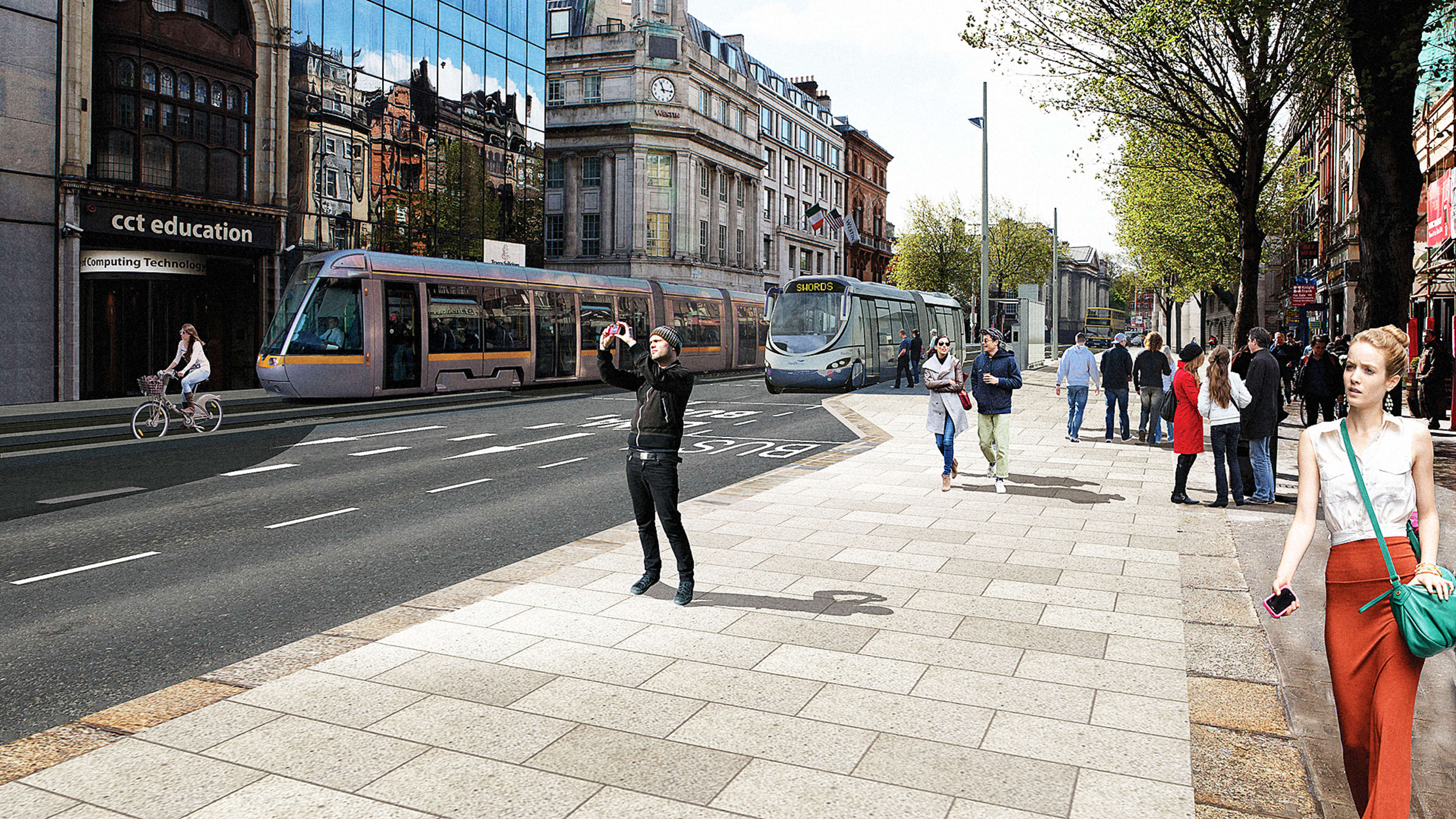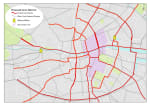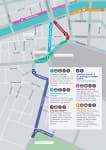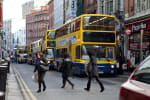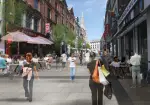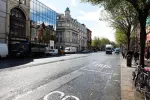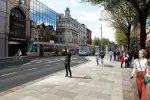Dublin ranks just under Los Angeles for having some of the worst traffic jams in the world. The problem is predicted to get worse as the city quickly grows–somehow, it will have to squeeze in 20% more commuters over the next decade. That’s why the city is now deciding to make a radical shift: It wants to ban cars from several major downtown streets.
Right now, pedestrians don’t have it easy. “Dublin has a compact city center, but we don’t give enough priority to pedestrians or cyclists,” says Ciarán Cuffe, chair of the city council’s transport committee. “All too often those who walk are left waiting at crossings while cars whizz past for minutes on end.”
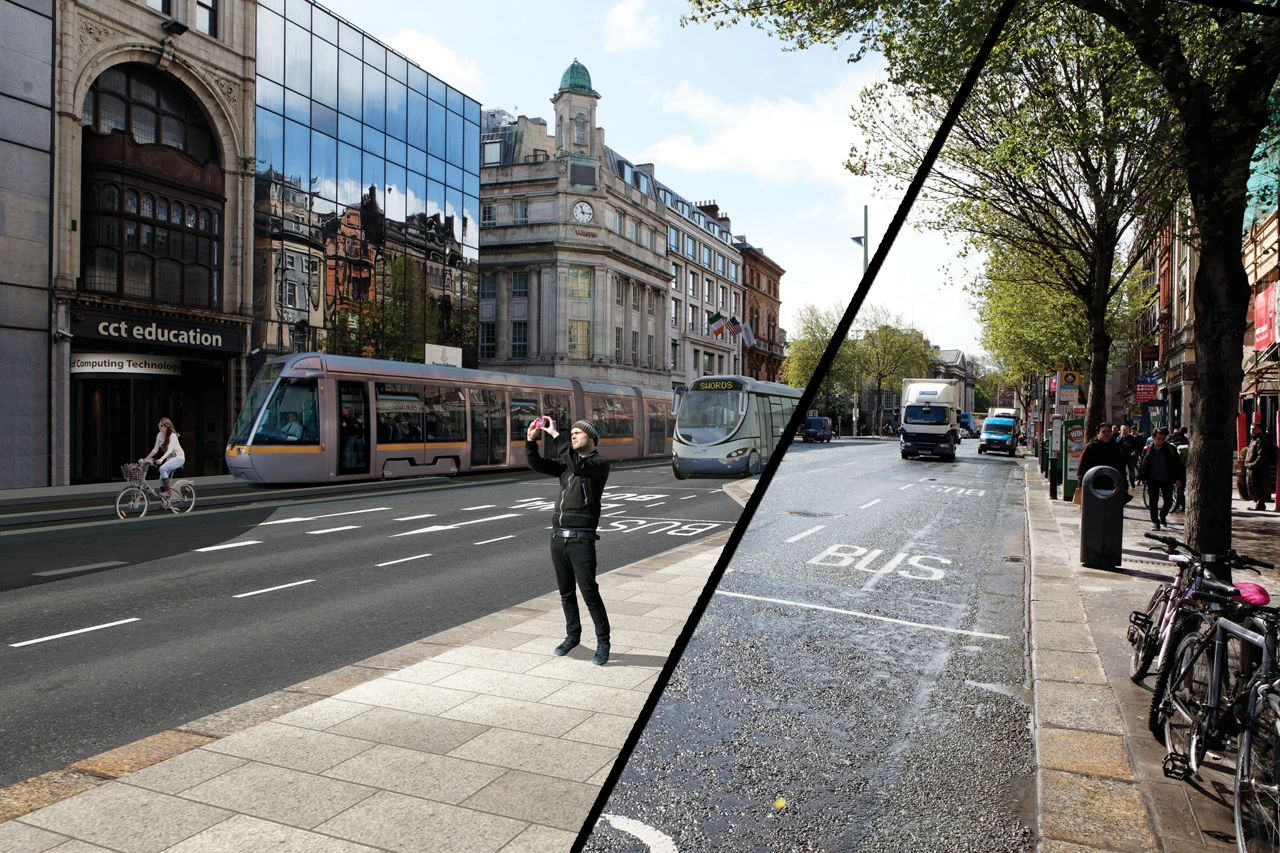
In the proposed plan, the city wants to route cars around the city center, and turn major streets into car-free plazas and passages for buses, bikes, pedestrians, and a new tram line. Along the banks of the River Liffey, polluted roads will become promenades. On Grafton Street, a former car lane will turn into a tree-shaded terrace with cafe tables, while the other lane has tram tracks. New bike lanes and wider sidewalks will be added as well.
All of this still needs to pass public approval, but the city expects that to happen. The changes will come gradually. “Dublin won’t become car-free tomorrow, but as we improve our light rail network there are fantastic opportunities to create car-free areas where you can breathe, think, and hear yourself speak,” Cuffe says. “Dubliners are very receptive to this. The true test of a civilized city is whether you can let go your child’s hand and allow them to explore the city by themselves. That is our ultimate goal.”
Dublin is already spending about $420 million on a new network of tram lines throughout the city, and plans to spend another $170 million to pedestrianize the downtown streets.
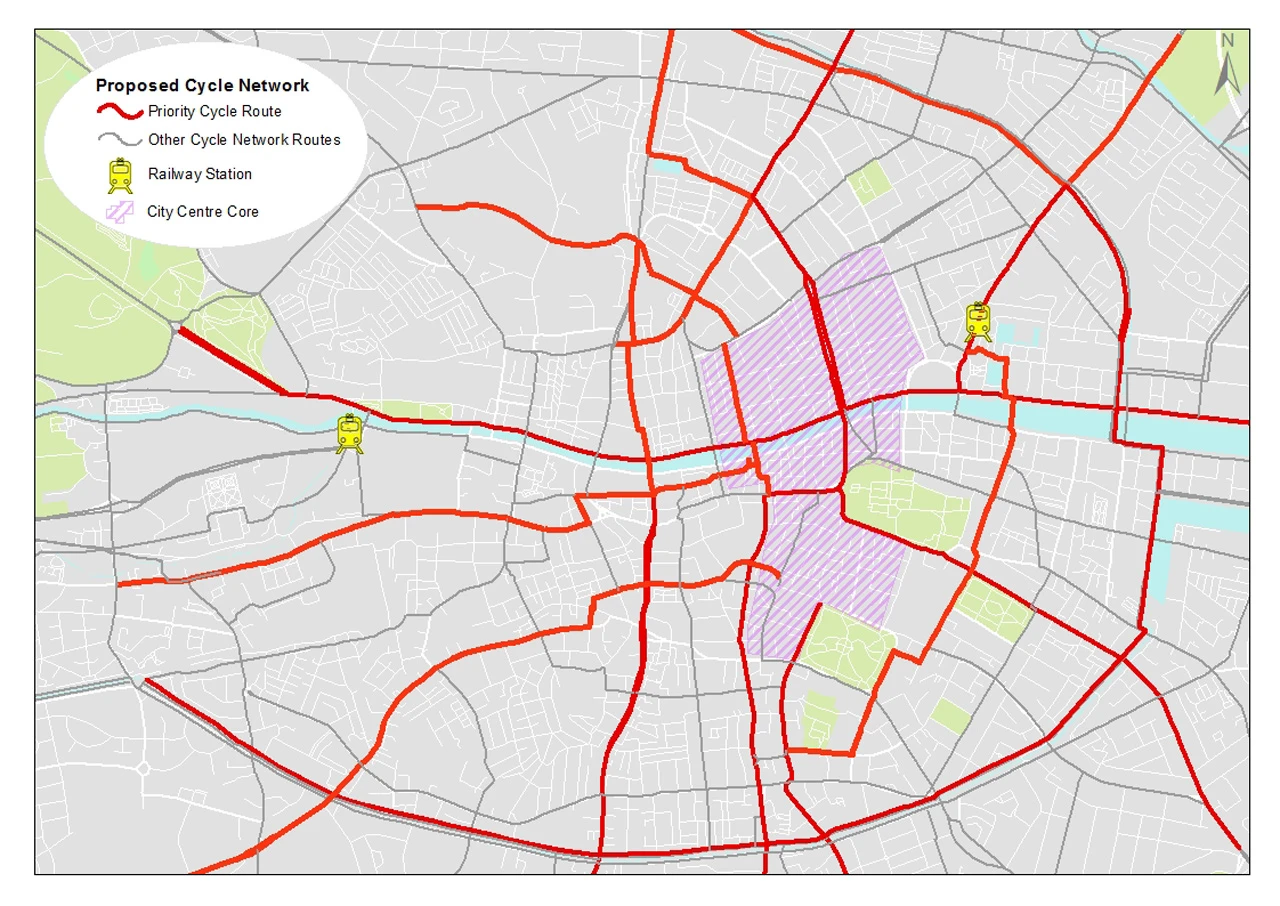
It’s helped by the fact that demographics are changing. As in most other major cities, more millennials want to live in the city center. Over the last decade, cycling rates more than doubled, while car use dropped 17%. The city now has a popular bike-sharing program and ride-sharing apps like Hailo and Uber. A car-sharing company called GoCar offers cars by the hour.
As streets transform, the city expects more people to be drawn to the area. “These change will improve the city center and revive the heart of the city,” says Cuffe. “Ireland and Dublin’s economy have improved in recent years but it has been a fragile recovery. Making the city center more livable, walkable, and cyclable should be good for businesses, residents and tourists.”
Cars are unlikely to completely go away in Dublin–or at least not anytime soon. But the plan aims to cut daily car commutes from 33% to 20% in only two years, while increasing public transit, walking, and biking.
The same thing is happening in several other cities, like Paris, where the mayor recently unveiled a plan to turn a highway into a riverside park, and where the city center is also starting to ban cars. Madrid, Brussels, and several other European cities have similar plans. While there are some isolated examples elsewhere–like new pedestrian plazas in Manhattan–it will be interesting to see if larger car-free networks begin to pop up in the U.S.
Recognize your brand’s excellence by applying to this year’s Brands That Matter Awards before the early-rate deadline, May 3.
